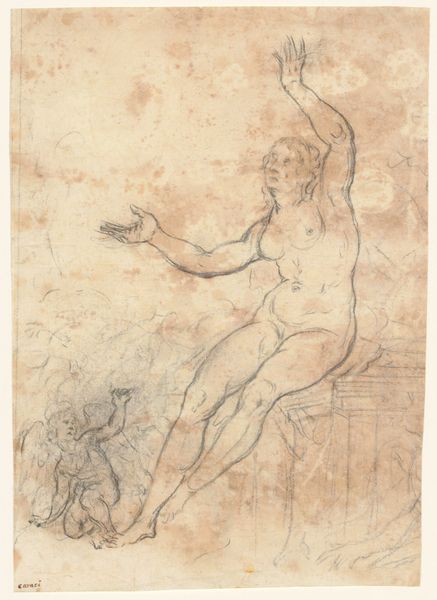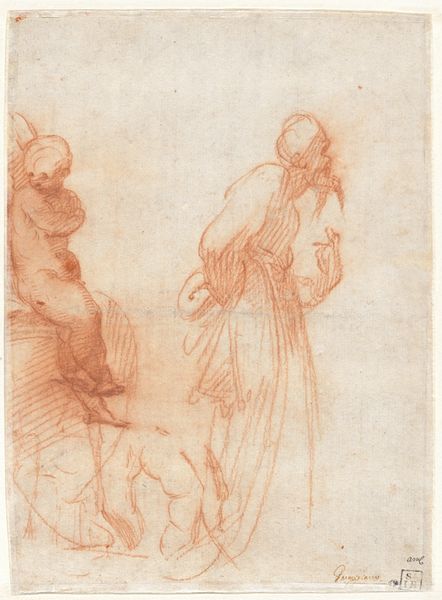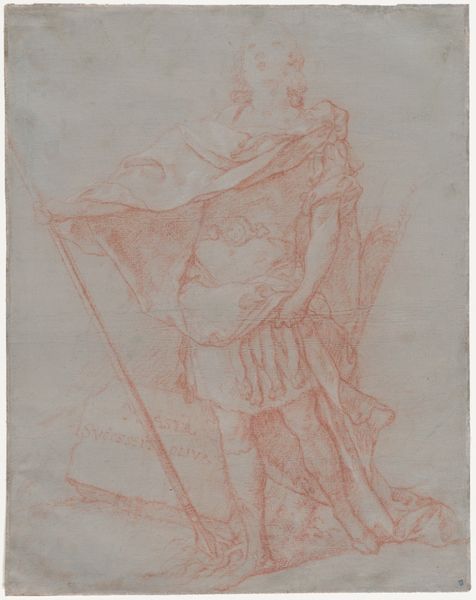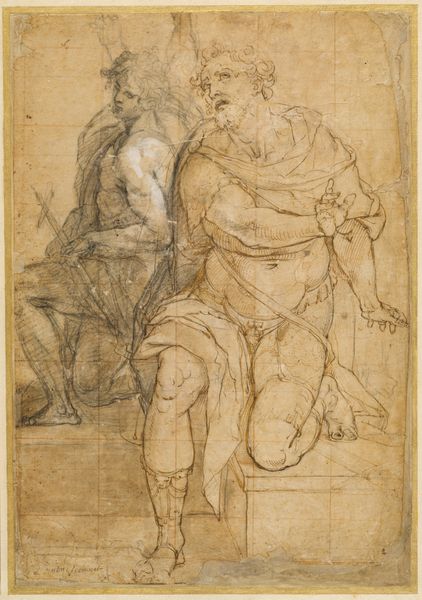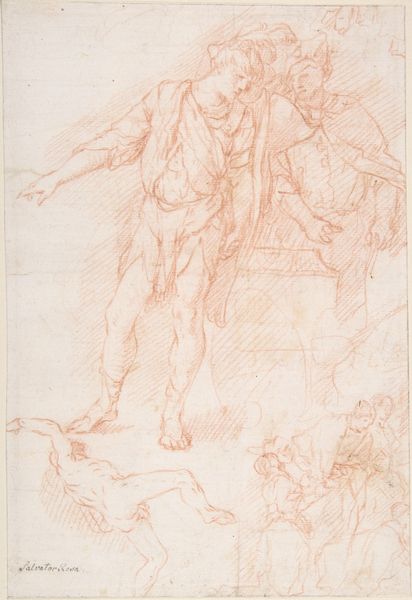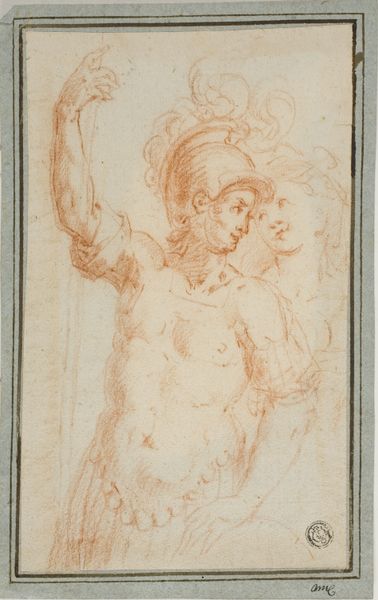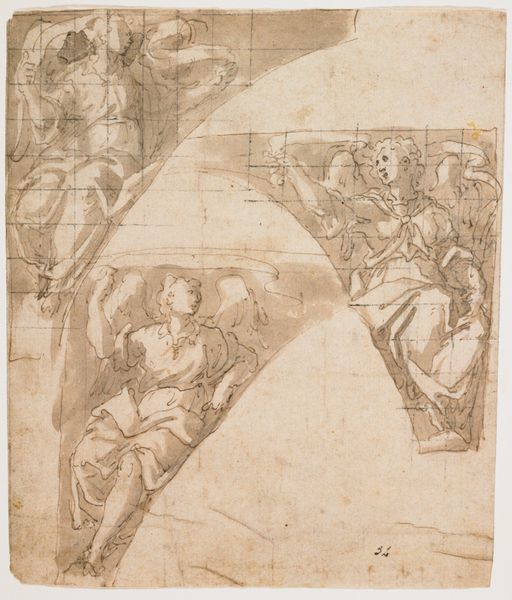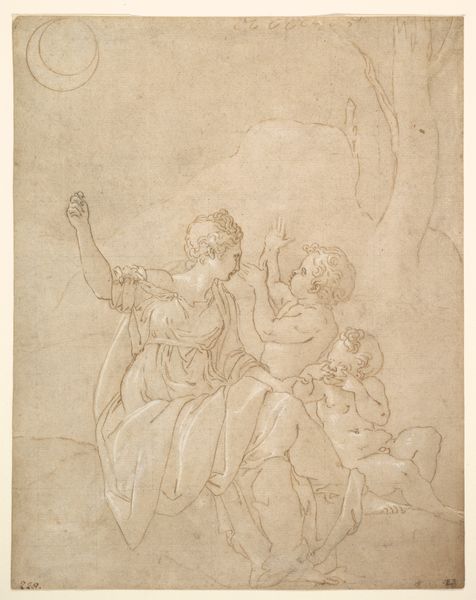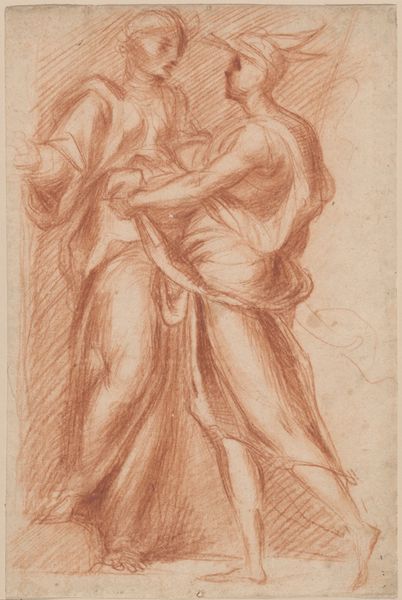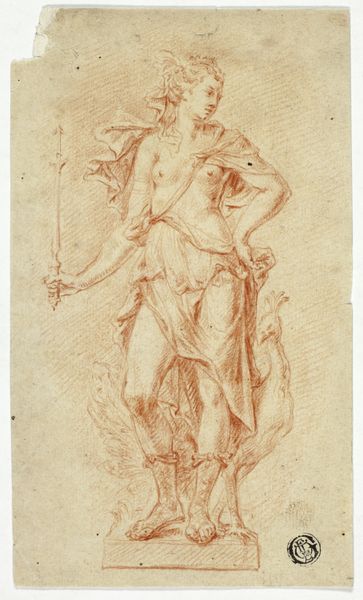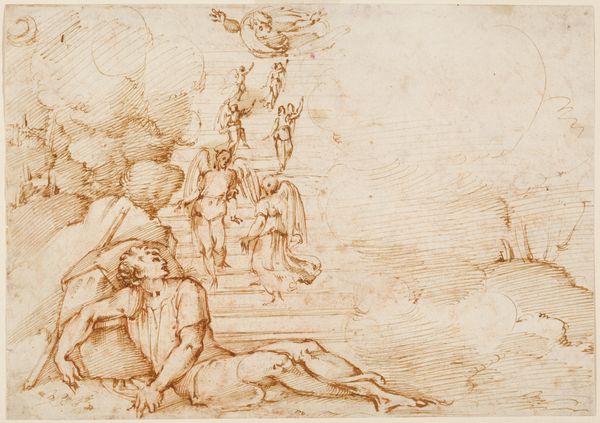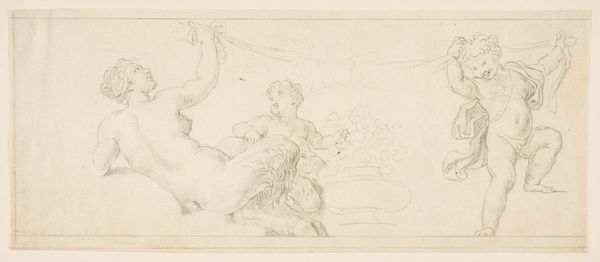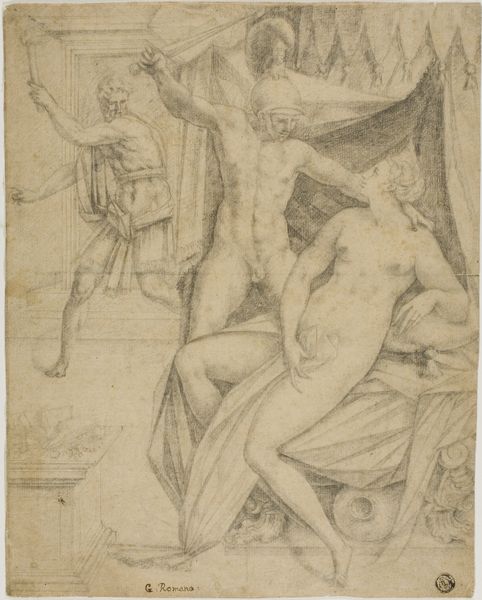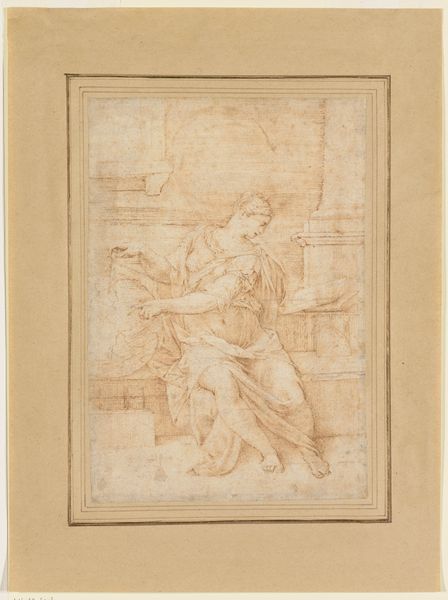
Woman with a jar on her head seen from behind, two women with a cloth in the background 1536 - 1614
0:00
0:00
drawing, paper, ink
#
drawing
#
figuration
#
paper
#
ink
#
genre-painting
#
italian-renaissance
Dimensions: 210 mm (height) x 114 mm (width) (bladmaal)
Curator: This ink drawing on paper, "Woman with a jar on her head seen from behind, two women with a cloth in the background," is attributed to Cesare Nebbia, an artist active between 1536 and 1614. Editor: The first impression? There's a powerful stillness conveyed despite the woman's burden and action, a certain earthy strength rendered beautifully with skilled, yet raw execution in the materials used. Curator: Absolutely, and thinking about this depiction, it speaks to broader issues of women's labor within a specific social and historical context. What might have been her social standing in 16th-century Italy? And how are we, as viewers, complicit in idealizing this representation, overlooking the implied physical toil? Editor: Well, if we focus on the jar itself, you know, its creation involved sourcing clay, shaping, firing… likely a communal process and specific technology accessible for trade, so let’s really consider those unseen labors involved in material production itself. Curator: Precisely. And note how Nebbia chooses to depict her – viewed from behind. Does this anonymity erase individuality or amplify the representation of an archetype, the working woman? It provokes questions about visibility, agency, and representation of marginalized identities. Editor: The line quality contributes, too – see how the varied line weight suggests the weight of the water she carries and then those rough sketch marks around her that give immediacy. It’s really quite incredible! It showcases his skillful labor through craft, the artist transforming humble ink and paper to elevate a mundane act to, as you’ve hinted, something iconic. Curator: It encourages us to look beyond aesthetic value. By focusing on the representation of gender roles and the lives of ordinary women, it becomes a powerful statement about social structures. Editor: A statement visualized through carefully selected and implemented means, really. From preparation of the materials, application and artist skills it presents that nexus point where craft becomes commentary! Curator: It's amazing how much context can be unveiled by critically examining not just *what* is depicted, but also *how* and *why.* Editor: Indeed. And, really thinking through labor – both hers *and* Nebbia's -- truly amplifies what could appear, initially, as just a simple, quick sketch.
Comments
No comments
Be the first to comment and join the conversation on the ultimate creative platform.
